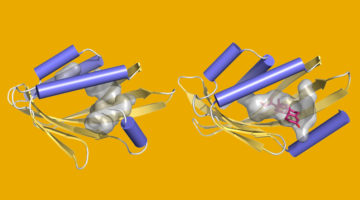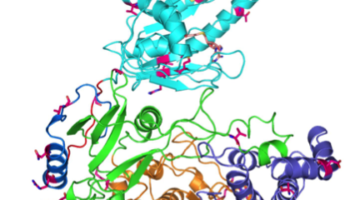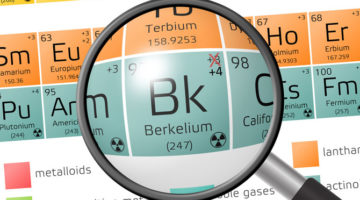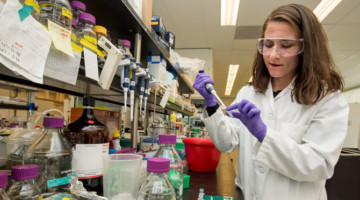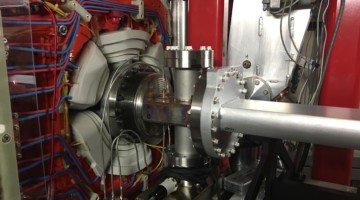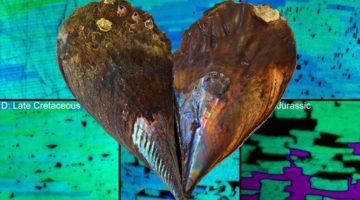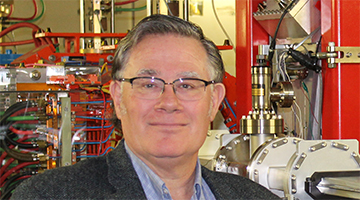Curved β sheets are basic building blocks of many protein cavities that, by serving as binding sites for other molecules, are essential to protein function. β-sheet curvature can now be controlled with atomic-level accuracy, opening the door to custom-designed sites capable of entirely new functions. Read more »![]()
![]()
All News & Updates
Roger Falcone Elected to American Academy of Arts and Sciences
ALS Director Roger Falcone is one of five Berkeley Lab scientists and 188 new fellows elected to the American Academy of Arts and Sciences. The honorary society recognizes leading figures in academia, the arts, science, business, and government. Read more »
Researchers Gain Insight into Protein Critical to Zika Virus Reproduction
Zika virus is a mosquito-borne infectious disease linked to certain birth defects in infants. Scientists have mapped a key viral protein called NS5, which contains two enzymes: one reduces the body’s ability to mount an immune response against infection and the other helps start the genetic replication process. Read more »
How Berkelium Stands Out in a Heavy Metal Crowd
Using several spectroscopic techniques, scientists found that the element berkelium breaks form with its heavy-element peers by taking on an extra positive charge when bound to a synthetic organic molecule. This property could help scientists develop better methods for handling and purifying nuclear materials. Read more »
Could This Enzyme Help Turn Biofuel Waste into Something Useful?
A protein used by common soil bacteria is providing new clues in the effort to convert aryl compounds, a common waste product from industrial and agricultural practices, into something of value. This Joint BioEnergy Institute (JBEI) study, which involved ALS Beamline 8.2.2, targets LigM for its role in breaking down aromatic pollutants. Read more »
2017 ALS Shutdown Recap
The last few months were quieter than usual for ALS users but not for staff tasked with maintaining and improving the ALS. The recent ALS shutdown was one of the longest on record, spanning almost three months. Those involved say it was also one of the most successful, with everything on the to-do list crossed off. The work accomplished paves the way for new beamlines, better water-cooling capacity, and ALS-U. Read more »
Ancient Ocean Temperatures Recorded in Mother-of-Pearl
Researchers have shown that the thickness of the nacre, or mother-of-pearl, that lines the insides of mollusk shells can be used to estimate ocean temperatures as far back as the early Jurassic period. X-ray studies of modern and ancient shells help establish the method’s feasibility. Read more »
7th International Conferences on Hard X-Ray Photoelectron Spectroscopy
The International Conferences on Hard X-Ray Photoelectron Spectroscopy will be held September 11-15, 2017 in Berkeley, CA. They will bring together researchers from a wide variety of fields, from fundamental condensed matter and atomic and molecular physics to more applied surface and interface studies of catalysis, energy and IT device- and process- development, and environmental research. The abstract deadline is June 15, 2017. Read more »
Call for Abstracts: Novel Trends in Synchrotron and FEL-Based Analysis
Abstracts are requested for the AVS 64th International Symposium and Exhibition, to be held October 29 – November 3, 2017 in Tampa, Florida. The Novel Trends in Synchrotron and FEL-Based Analysis session will provide a forum for communicating the most recent achievements in surface and interface research using SR and FEL radiation from IR to hard x-rays. The abstract deadline is May 1, 2017. Read more »
Chuck Swenson, Magnetic and Vacuum Systems Group Leader
Chuck Swenson came to Berkeley Lab five years ago from Los Alamos National Laboratory. He joined the the magnetic and vacuum systems group at the ALS, where he’s now group leader and looking forward to diving into the ALS Upgrade project, ALS-U. Read more »
- « Previous Page
- 1
- …
- 109
- 110
- 111
- 112
- 113
- …
- 139
- Next Page »
